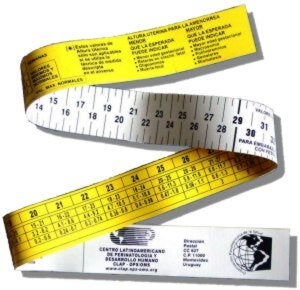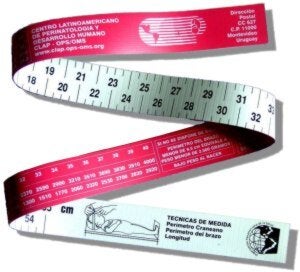Tools for the provision of care and training at health care facilities .
Appropriate Technology/Standards.
Publication year: 1990. Last updated in 2010.
The pocket gestogram is a support technology for antenatal monitoring; it makes it easier for health care workers at first and second level centers and hospitals to conduct a proper monitoring of pregnancy.
Description: It consists of two 12-cm discs; the front disc is mobile and turns sliding over the fixed disc on the back.
Content: Measurements of some parameters selected on account of their reliability and precision were added to the obstetric calendar to calculate several parameters, including amenorrhea, to monitor fetal growth and vitality, to estimate pregnancy age and the newborn’s age, and to check that the pregnant woman’s weight gain, blood pressure, and uterine contractility are normal.
Moving disc: This disc turns over a calendar. Setting the red arrow on the first day of the last menses, the user locates the date of the visit and obtains the amenorrhea as completed weeks. The values to be compared are to the left of the week found: 90th and 10th percentiles of uterine height, 90th and 25th percentiles of maternal weight gain, 95th and 5th percentiles of fetal abdominal girth. This disc allows the detection either of fetal growth restriction (when measurements are under the lowest values of the appropriate percentiles), or macrosomia (when they are over the corresponding percentiles), variations in the duration of pregnancy, or contractility greater than appropriate for gestational age.
Back side: If the date of the last menstruation is not known, this side of the disc allows the user to estimate amenorrhea with a known error, based on the ultrasound measurements of the embryo/fetus. From the 20th week onwards, it presents the 10th and 90th percentile values of fetal weight and the 50th percentile values of length corresponding to each week. It comes with user instructions.
Available in Spanish, English, and Portuguese.
Target audience: Health care workers.
Formats available: Pocket format in plastic-coated cardboard.























